Eduard 1/48 Spitfire VIII
While the Spitfire IX was both better-known and produced in far larger numbers, the Spitfire VIII represents the high-point of development of the Merlin-powered Spitfire variants.
Basically an unpressurized Mk.VII, the Spitfire VIII had all the refinements of the first major redesign of the Spitfire since the Mk.I (The Spitfire V was an “interim” development of a beefed-up Mk.I to take a more powerful engine, while the Spitfire IX was an “interim” development of the Mk.V, again to take a more powerful engine.) The Mk.VIII had a strengthened fuselage, reduced-span ailerons, enlarged rudder, increased armor protection, a retractable tailwheel, and additional fuel in two 14-gallon tanks in the wing leading edge, in addition to the Merlin 60-series engine with two-speed supercharger, with all aircraft equipped with the Aero-Vee filter.
Production of the Spitfire VIII commenced in late 1942, with all aircraft shipped overseas. Initial deliveries were to units in the Mediterranean. Once production built up in 1943, additional deliveries were made to RAF units in India and RAAF units in Australia; these Spitfire VIIIs were operated in first-line service until the end of the war. Seven Spitfire VIIIs were issued to the USAAF 31st Fighter Group in Italy in late 1943.
Up to September 1943, the Hurricane II and Mohawk IV had b been the primary fighter types in Southeast Asia Command (SEAC, based primarily in eastern India (what is today Bangladesh). The first Spitfire Vc fighters arrived in September 1943 and equipped Hurricane squadrons that passed their aircraft on to replace the Mohawks. The Spitfires provided air defense for Calcutta, and were also used in the escort role for RAF operations over Burma with Vultee Vengeance dive bombers. The Spitfires were the first Allied fighters in the China-Burma-India theater that could catch and shoot down the Mitsubishi Ki.46 “Dinah” reconnaissance aircraft.
In preparation for the British Army's Arakan Offensive, 81 and 152 Squadrons were transferred to India from Italy in December 1943. Once in India, they were re-equipped with the first Spitfire VIII fighters to arrive. Seven-victory ace Flying Officer Alan Peart of 81 Squadron recalled the Spitfire VIII thus: “The Mark VIII Spitfire was a really beautiful machine. It had a retractable tailwheel, clean lines and a pointed tail. The Stromberg carburetor permitted negative Gs without the engine cutting,and it had a two-stage supercharger that gave us considerable additional power above 18,000 feet. In the Arakan fighting, we met the enemy in force in our new mark VIIIs, and within a few days the Japanese suffered severe fighter losses that curtailed their normal aggressiveness. Up until then, enemy aircraft appeared to roam at will over Allied territory.”
152 Squadron became operational at Calcutta in mid-December 1943, and scored the first Spitfire VIII victory in the CBI on December 26, 1943, when two Spitfires flown by Flying Officer R.E.J. Macdonald and Flight Sergeant R.O.J. Patterson intercepted and shot down a “Dinah.”
On New Year's Day 1944, more Spitfire VIIIs re-equipped some of the Spitfire Vc's in use, though the two types would be about equal in numbers till the summer of 1944. 155 Squadron gave up its status as the last to fly the Mohawk IV when they received Spitfire VIIIs.
On January 15, 1944, the 64th Sentai made three separate sweeps over the Arakan battlefield. The Japanese were met by Spitfire VIIIs, which decimated the Ki.43 Oscars the unit was flying in some very spectacular dogfights.
In February, the Japanese launched their last offensive in the CBI, Operation Ha-Go, the invasion of India. There was increased aerial activity, with Spitfires meeting the Ki.44 Tojo in combat for the first time. In sharp-turning fights, the Spitfire pilots came back to base with the high-altitude wingtips of the Spitfire VIIIs wrinkled, with a couple extra degrees of dihedral. The high altitude tips were quickly replaced with the standard wingtips.
Once the Japanese were held in t he Arakan in late February, fighting moved into Imphal in March. Operation Thursday saw Orde Wingate's Chindits enter combat behind enemy lines at the “Broadway” and “Piccadily” airfields in an attempt to slow down the Japanese advance at Imphal and Kohima. The decisive phase of the Burma campaign began on March 8 when the Japanese attacked Imphal. 81 Squadron had a detachment of Spitfires at “Broadway” airfield, where they were successful in intercepting and destroying Japanese aircraft. On March 13, 40 Ki.43s appeared over Broadway. In a fight lasting 45 minutes, the 81 Squadron Spitfires shot down 4 and damaged 6 others, despite being outnumbered. RAAF Flying Officer Larry Cronin was bounced by 8 Ki.43s as he raised his landing gear getting off Broadway and only escaped by wild flying over the jungle during which he scored his fifth victory. On March 17, 81 Squadron had their last fight at Broadway when the detachment was again surprised by Ki.43s. The squadron CO, Squadron Leader Whitamore, was killed in combat, and Alan Peart had the fight of his life at low altitude for 40 minutes, during which he scored his fifth victory.
At the end of March, the Japanese surrounded the Imphal Valley, which could now only be re-supplied by air. Ki.43s attacked formations of Dakota transports, which the Spitfire VIIIs defended in several air battles. Through most of April, the Spitfires engaged formations of Japanese fighters on a daily basis. The Spitfire VIII was faster and more heavily armed and armored than the Ki.43, which was more maneuverable and generally outnumbered the Spitfires in these fights.
May 1944 was the hardest month for air activity, despite the deteriorating weather from the coming monsoon season. 152 Squadron finally saw sustained combat as the squadron provided long ranger fighter escort for Vengeance dive-bomber missions against the Japanese rear and in support of the Chindits. Despite the onset of the monsoon, fighting in Imphal continued into June. On June 22, the siege of Imphal was lifted and the Japanese began their retreat back to Burma. Having defeated the JAAF in northern Burma, RAF fighter units could now conduct offensive work in support of ground forces. There would be little air combat during the monsoon, and following the end of that in November, the Japanese forces in Burma were greatly reduced, though air combat did continue on occasion to the end of the war.
The real secret to RAF success in these battles was the Air Fighting Training Unit, commanded by 28 victory Battle of Britain ace Group Captain Frank Carey, whose instructors included such aces as Flight Lieutenant “Ginger” Lacey, another Battle of Britain ace with 17 victories. Small groups of pilots would be brought to Carey's “Top Gun” forerunner to be trained in effective air combat tactics, which they took back to their squadrons. The RAF official history stated “It was said that a remarkable proportion of the enemy fighters brought down were destroyed by pilots listening to the echo of Carey's voice and obeying his teaching.”
Eduard continues it release of the major marks of Merlin-60 Spitfires with this Spitfire VIII. The kit features all-new wings with the reduced-span ailerons and the wing leading edge tanks that were unique to this mark. Additionally, the fuselage is new, with the retractable tail wheel. As with all the other releases, the ailerons, elevators and rudder are separate and can be posed dynamically. The Profipack release includes a photo-etch fret with the instrument panel, seatbelts, and radiators. The kit comes with decals for six aircraft from Italy, India and Australia. The kit is the same high quality as the previous Spitfire IX kits, with beautiful petite surface detail, knife-edge trailing edges of wings and tail, and precise fit.
As with the rest of the Eduard Spitfires, be absolutely certain that you trim off all sprue connections, because fit is tight and precise, and any residue will adversely affect the way things go together.
If you have built one of these Eduard Spitfires before, there are no surprises here. I painted and assembled the cockpit, then the wing sub-assembly, then the fuselage, brought the two major sub-assemblies together, then attacked the horizontal stabilizer, elevators and rudder.
The Barracuda Decals sheet 48008 has a really interesting collection of possibilities for Spitfire VIIIs including an option for a well-weathered Spitfire VIII flown by 152 Squadron, which I decided to do. Do not follow the decal sheet's painting instructions. The Spitfire VIIIs in SEAC were completely repainted in the Temperate Land Scheme, Dark Earth/Dark Green uppers and medium SeaGrey lowers, in a camouflage scheme that varied from aircraft to aircraft and only approximated the standard “A scheme” camouflage pattern. The painting instructions in the kit instructions are more accurate. I did the whole scheme in freehand, going to lengths to do sun-fading of the paint, and applying heavy weathering to the exhaust as shown in photos of this airplane. Additionally, the 152 Squadron “black Panther” marking appeared only on the left side, as shown in photos of 152 Squadron Spitfires on the internet. The decals went on without problem. I didn't use any of the stencil decals, since stenciling was not reapplied to these airplanes after they went through the paint shops.
Eduard's Spitfires are the best Merlin-60 Spitfires in any scale (unless you want to open everything up, in which case the Tamiya 1/32 kit is what you want). The Barracuda decal sheet is up to the company's standard of high quality. The Profipack kits offer good value for the money, with ample extra marking options and photoetch details. Follow the instructions and take your time and the result is fantastic. Highly recommended.
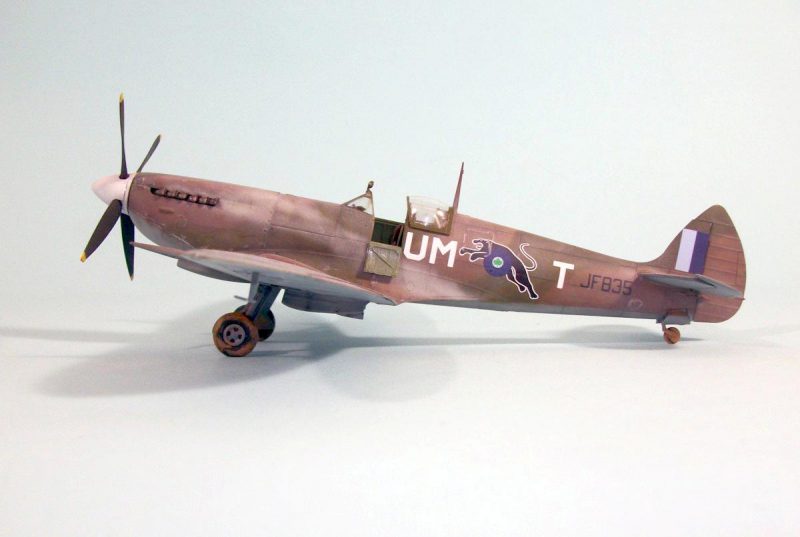
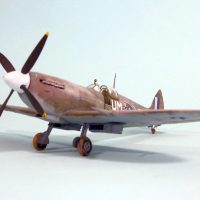
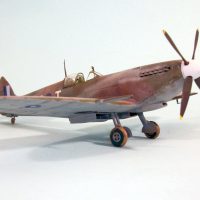
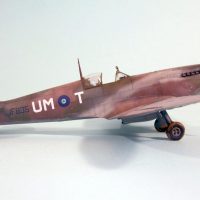
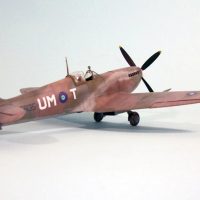
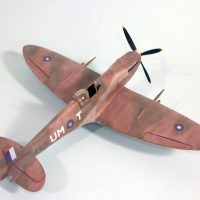
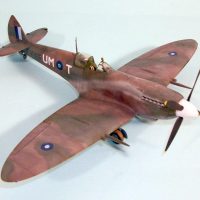
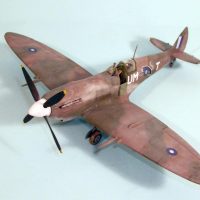
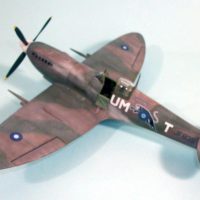
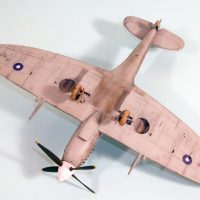
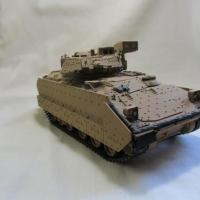

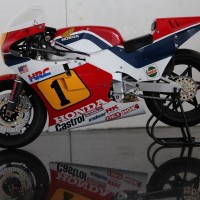
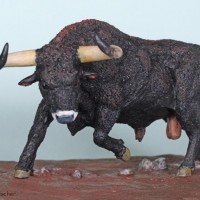
Another beauty from the "professor", nice narrative to go along with a nice build!
Great article and build. Venture a guess that your Mk. VIII shot down CA's Ki-43.
After reading the controversy over the Nat's P-47 champion and the wrong decals on the prop controversy,along with its smooth silky pristine finish which should be shown under glass...here we have a Grunge Spitfire. Dirty from fighting and being in a hot humid environment while fighting the Japanese. I like models that have a little Grunge or character from use and abuse.
Two thumbs up.
Which is why the only way you'll find me at a Nats is if the Big Publisher of The Bridgebusters wants to send me there as part of a book tour.
Not only a beauty of a model, but a superby researched narrative. Why have I only stumbled upon this website now? I think I'm going to like it here. Great job.
Welcome to the net's best model club Steve. Tell your friends!
I do the research in my posts because writing aviation history is my profession (a profession that grew out of involvement in the hobby)..
Nice one Tom, your weathering looks totally convincing (and thanks for the heads-up on the Barracuda painting instructions).
Not just on the SEAC schemes, Mike. The USAAF desert scheme is wrong. there were not decals, the RAF insignia was overpainted with Dark Earth. Also,. the color photos I have seen of the 31st FG airplanes, they have that strange camo with Azure Blue just directly in front of the AeroVee fliter, with upper surface camo down the lower cowling and the forward sides of the filter.
Congratulations Tom for this outstanding Mk VIII.
I love particularly the weathering and as always the narration about history.
Love it...definitively
Flattery will get you everywhere. 🙂
Yeah it's ok I guess if beautifully finished and well researched models are your thing...
LOL
Nice!
Like
P.k
Superb as usual! Well done Tom. Your display area must be enormous to house all your models!
The boxes fill the garage. 🙂
Tom mine is already taking the place of the display area for my models. 🙂
Love the SEAC scheme and the subject, lovely work Tom.
Another very well-executed project! I haven't built anything in the SEAC scheme/decals yet but really like them, and think I'm gonna have to put one on the bench soon. I think I have a Hurri in the SEAC livery...
Very nice model Tom, Eduard have nailed the shape in their 1/48 Spitfires, those very subtle cowling bulges over the engine cam covers, perfect. The shorter ailerons is interesting, wonder what the idea was there? Actually the Frize type ailerons of the Spifire were of interesting design and seem unique to the Spitfire. Enjoyed the history, the Asian theatre seems not to be as well covered as the European and Pacific theatres? In Alfred Price's book on the "Spitfire a Complete Fighting History" there is a chapter written by WCDR Hank Costain about an encounter 615 Sqn had with a tropical thunderstorm near Calcutta India in their Spitfire MkVIII's. This storm was a monster thunder bumper, Cu Nb, it straddled their track with no discernible way around it. After flying into it, in seconds it was pitch black outside, to the extent he couldn't even see his wingtips, the turbulence was so violent the stick was all but wrenched out of his hands and walnut sized hail drowned out the engine noise. He had no control over the Spitfire at all and ended going up to 10 000 Ft, then plunging back down to 1000 Ft. At which stage he decided to bail out, getting hit by the tailplane and breaking his leg in the process. In less than five minutes 615 had lost it's CO and three other pilots with three others wounded and lost half their aircraft, without the Japs firing a shot! Amazing, even the mighty Spitfire had to bow down to mother nature!
I was once caught in a thunderstorm - routed into it by ATC. Don't know how we survived other than it wasn't time to go. The. Scariest. Flying. Incident. Of. My. Flying. Career.